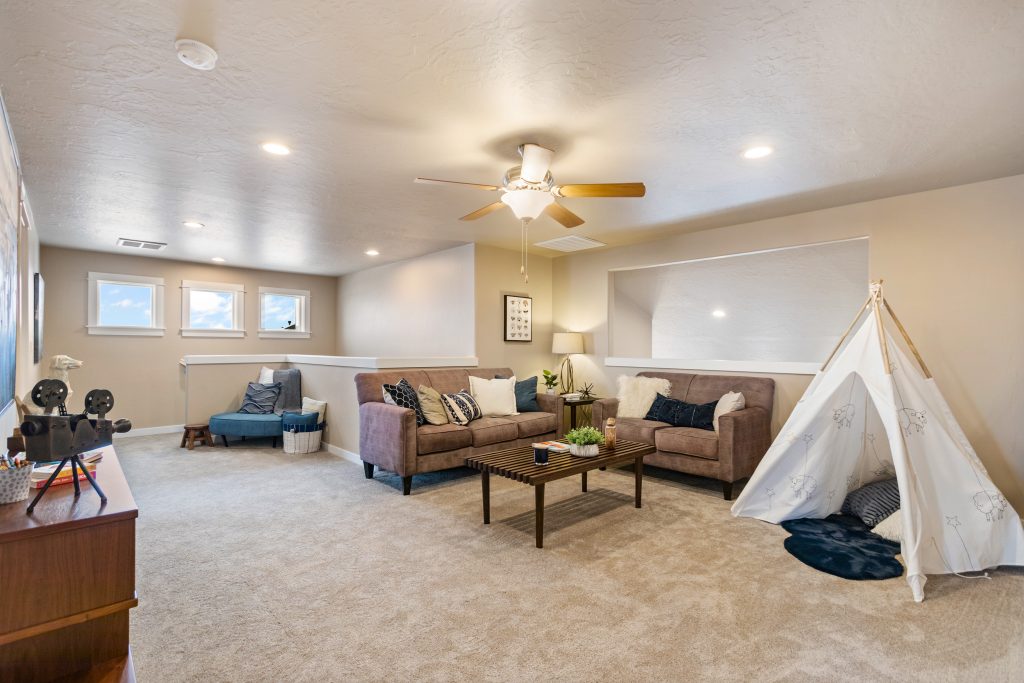How to Create a Multipurpose Space

Are you looking to make the most of your home’s floorplan? One way to maximize function and efficiency within your space is by creating a multipurpose room. Whether you’re dealing with limited square footage or just want to add versatility to your home, designing a multipurpose space can offer endless possibilities.
This blog post shares valuable design tips and practical strategies to make the most of your home’s potential. Whether you’re looking to create a home office, a play area for children, or simply add more storage, these tips will help you achieve a harmonious balance of form and function.
Assessing Your Space
Before transforming your home, you must evaluate your current living space. Start by analyzing each room’s layout and identifying underutilized areas. Consider spaces such as corners, hallways, or even large closets that can be repurposed into functional zones.
Take note of the flow within your home. Observe how foot traffic moves through each area and identify any obstacles that may hinder the creation of a multipurpose space. This assessment will help you pinpoint where changes or improvements are needed to accommodate different functions.
Don’t forget to consider your family’s lifestyle and specific needs. Are there any activities or hobbies that require dedicated space? Do you need a home office, guest bedroom, workout area, or playroom? Clearly outlining the intended uses of the room allows you to better plan for furniture layout, storage solutions, and decor elements that cater to each function.
Design Principles for Versatile Spaces
Creating a multipurpose space requires a solid understanding of design principles. Begin by focusing on the three key elements of good design: balance, proportion, and harmony. These principles will help you achieve a cohesive look while maintaining functionality.
Balance is crucial in ensuring that your space doesn’t feel overcrowded or sparse. Arrange furniture and decor elements in a way that evenly distributes visual weight throughout the room. This will create a comfortable and inviting atmosphere, regardless of the various activities taking place.
Proportion is about ensuring that the furniture and decor size align with your space’s dimensions. Avoid overwhelming smaller rooms with large pieces, instead choose items that fit comfortably without sacrificing functionality. This will help maintain a sense of openness and ease of movement.
Lastly, strive for harmony by coordinating colors, materials, and styles. Consistency in design elements will tie the space together and make transitions between different functions seamless. This will enhance the overall aesthetic and usability of your multipurpose area.
Creative Storage Solutions
To keep your multipurpose space organized and clutter-free, explore creative storage solutions that maximize every inch of available space. Start by incorporating built-in storage options, like shelves and cabinets, that blend seamlessly with your room’s design.
Consider multifunctional furniture pieces that offer hidden storage compartments. Ottomans with lift-up lids, benches with built-in storage, and coffee tables with drawers are excellent choices for maintaining a tidy environment while enhancing functionality.
Use vertical space to your advantage by installing wall-mounted shelves or pegboards. These solutions save floor space and provide easy access to frequently used items. They’re particularly useful in small or shared spaces where maintaining order is essential.
Furniture Selection for Flexibility
Choosing the right furniture is key to creating a multipurpose space that can adapt to changing needs. Look for pieces that serve multiple functions or can be easily reconfigured to suit different activities.
For example, opt for a sofa bed or daybed in a home office that doubles as a guest room. This allows you to accommodate overnight visitors without sacrificing function or style. Similarly, consider foldable desks or nesting tables that can be stowed away when not in use, freeing up valuable floor space.
Modular furniture is another smart choice for multipurpose spaces. These customizable pieces can be rearranged to fit different layouts or requirements, providing flexibility and adaptability as your needs evolve.
Lighting and Ambiance
Lighting plays a crucial role in defining different zones within a multipurpose space. Use a combination of ambient, task, and accent lighting to create distinct areas for various functions.
Install dimmable overhead lights to control the overall brightness of the room, allowing you to adjust the ambiance based on the activity. Add task lighting, such as desk lamps or under-cabinet lights, to provide focused illumination for specific tasks like reading or working.
Don’t underestimate the power of decor in enhancing the atmosphere of your multipurpose space. Use rugs, curtains, and wall art to visually separate different zones and add personality to your room. These elements can also serve as subtle cues that signal the intended function of each area.
Designing a multipurpose space within your home’s existing floorplan can be both challenging and rewarding. By following these tips for creating a versatile and practical multipurpose room, you can maximize function while maintaining style and comfort in your living space. Whether you’re working with limited square footage or simply want to add flexibility to your home layout, a well-designed multipurpose room can enhance both functionality and aesthetics within your living environment. So, get creative with your design ideas and start transforming your space today!
If you’re ready to say hello to a new home in Idaho, Oregon, Montana, or Washington we’re ready to help you find the right one! We have beautiful homes that are perfect for every stage in life. Contact us today to start your journey to your new dream home.